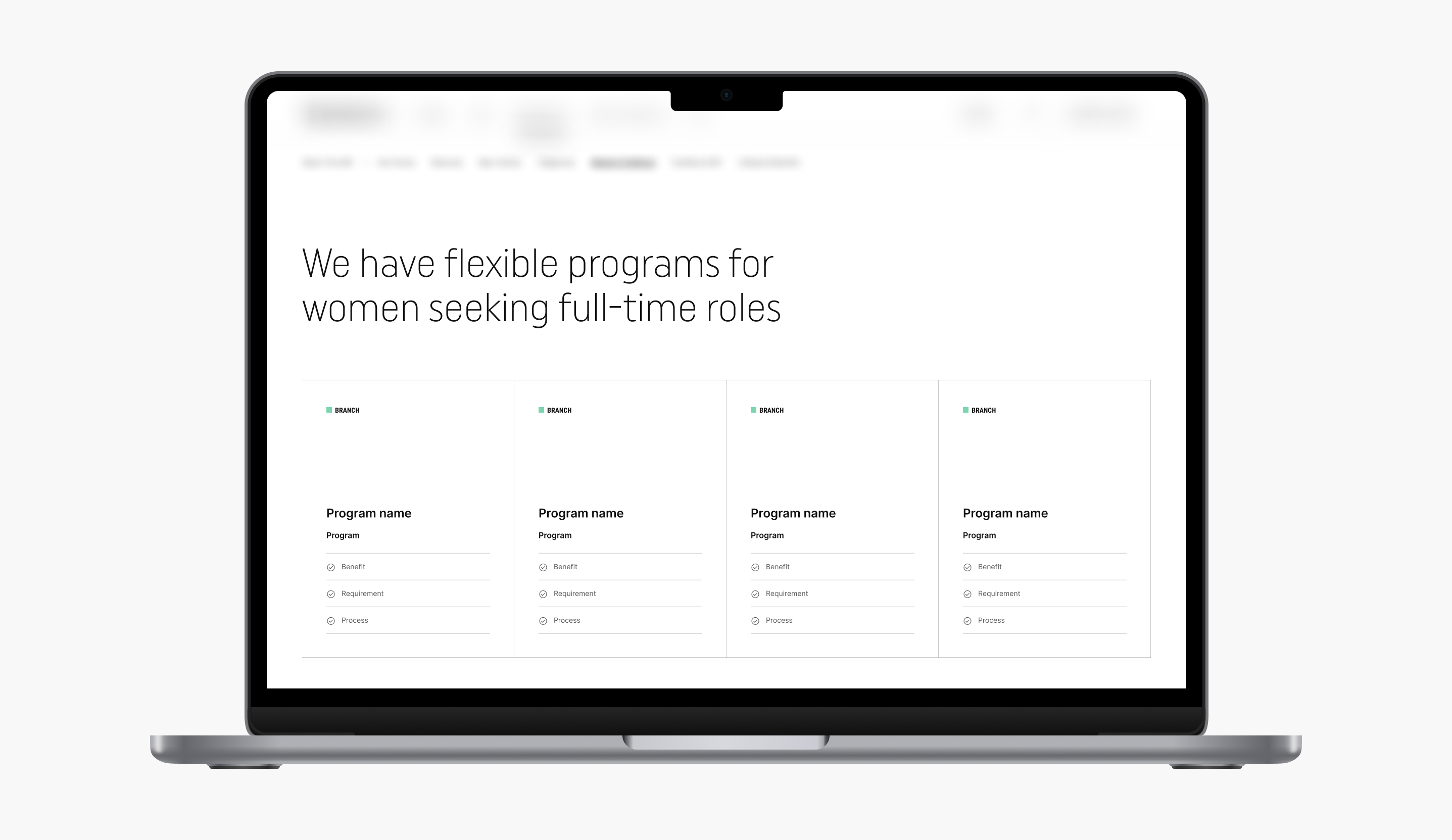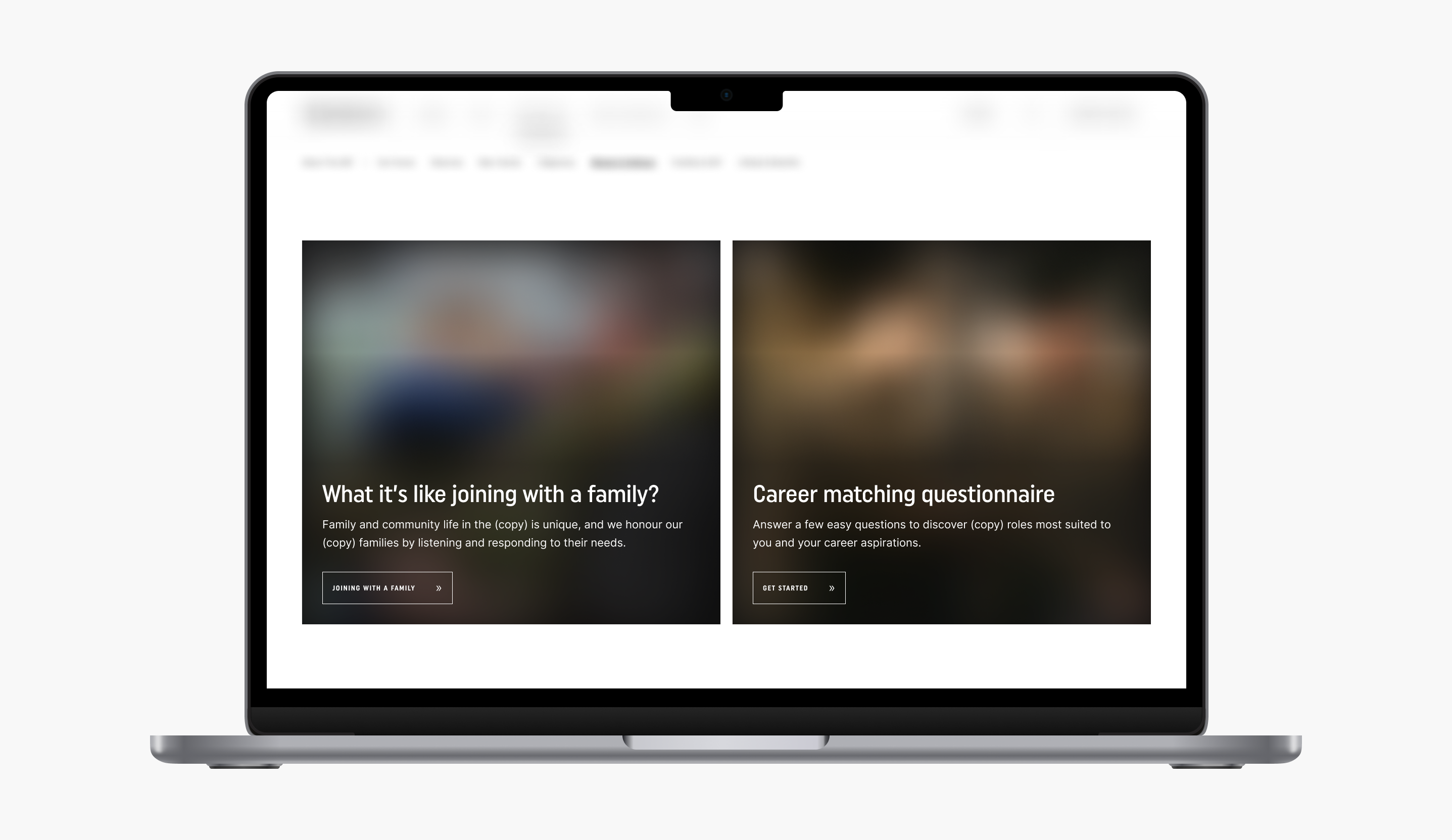2022-2023
Government Recruiting
UX Design / Strategy
UX Designer

After combing through our research & synthesis with another female designer (research was initially conducted by two males), I became responsible for the content strategy and design of the Women's spaces on the website.
I redesigned these pages using our new design system for the future-state website, and also implemented quick strategic (that only required a content editor) to the current website by changing content, FAQs, page hierarchy and navigation.
Listen to what women really want
as they deliberate on this big life
decision. (Spoiler: it wasn't about
hair, nails and babies)!
UX Researcher, Strategist, Designer
Client Communications
One of the key insights we gained was that women anticipated unequal standards from the organisation.
They were pleasantly surprised to learn that the experience was much more merit-based and encouraging than they previously feared.
Once discovered, this knowledge increased their motivation and confidence.
Most female candidates we spoke to didn't know that there were programs created to specifically help them begin and thrive in their roles.
I prioritised showcasing these programs throughout the site.

Our research also revealed that women wanted to see proof of female leadership and how a career with the organisation would allow them to become leaders in their field and of their teams.
Contrary to what was previously believed, they did not want to learn about hairstyles or babies!
03
I want career opportunities where progress is a measure effort and merit
04
I want a career that offers support through life-stages
02
I want a career where there is equal opportunity
05
I want to hear from women who have had success and can show me a path for my own
03
I want to see options where there is evidence of female success and leadership
06
I want proof that there is a path for me to aspire to

After research synthesis, I worked with our Strategy team to ideate about content.
I rapidly implemented strategic changes and introduced new content into the current women's pages.
Concurrently, I created low-fidelity wireframes for the redesign and worked closely with UI to utilise our design system and ensure that I fully understood the functionality of every component.
Finally, I tested the new designs to ensure it met our objectives and iterated our design accordingly.
Throughout this process, I also worked closely with stakeholders and other UX Designers to bounce ideas around and collaborate.
Our research process taught us the importance of democratising research across a diverse team. We realised that interviews were initially conducted and synthesised by two designers, both male, caucasian and the same age. While their synthesis and insights were thorough and invaluable, it was inevitably done through a biased lens.
When myself and another female designer, from diverse cultural backgrounds, synthesised the same research, we were able to have some important conversations and insights were validated, debated, and refined. This lead to a much better outcome for our project, and I hope it created more value for the female prospects that we designed this experience for.




